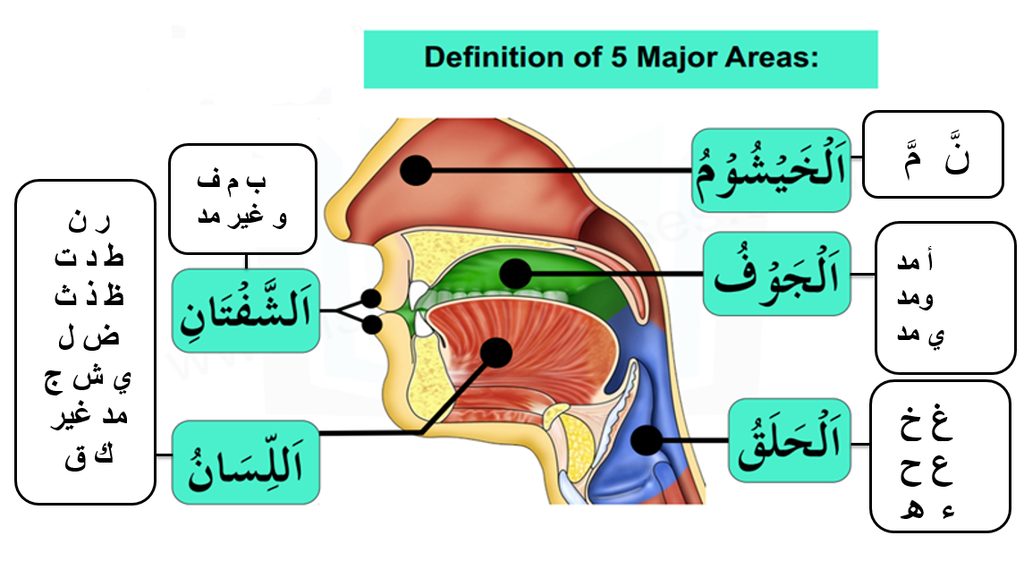Rules of laam saakinah
Laam saakinahلْ is a laam which is free from any harakahof dammah or fathah or kasrah. It has a sukoon on a letter(laam) لْ.
Types of Laam saakinah
1– Laam of the definite article (Laam at-ta’reef).
2– Laam saakinah of the verb.
3–Laam saakinah of the noun.
4-Laam saakinah of the participle.
5– Laam saakinah of the command.
–It is the definite article of Arabic alif-laam (الـ) added at the beginning of the common nouns to make them clearly defined or proper nouns.
–It consists of two categories:
A- Laam Al-Qamariyyah
B- Laam Ash-Shamsiyyah
A) Laam Al-Qamariyyah
– It is written and pronounced, and after it, a Shaddahdoes not appear.
– It has a sukoon on Laam: القمر
– It has al-ith–haar rule which means pronouncing letter clearly.
– If Laam is followed by any letter that collected in this phrase (ابغ حجك وخف عقيمة), laam will have ith-haar rule.
B) Laam Ash-Shamsiyyah
– It is written but not pronounced, and after it, a Shaddahwill appear.
– it has al-idgham rule: الشمس
– If Laam is followed by the rest of letters, laam will have al-idgham rule.
2- Laam of the verb:
– It is Laam saakinah originally present in the word whether the verb is past, present or command.
– It is either in the middle (present tense) or at the end of the word.
– It has al-ith-haar rule (wojob al- ith-haar) except if it is followed by laamل or raa’ ر.
– It has al-idgham rule if it is followed by Laam or raa’.
Example: قُل رَّبِّ
3- Laam saakinah of the noun:
– It is Laam saakinah originally present in the word not added to the word or extra like Laam at-ta’reef.
– It is always in the middle of the word.
Example: اللَّيْلَ
Note:
Laam saakinah can’t be at the beginning of the word because the Arabs don’t start with saakin, and it can’t be at the end of the noun because t isn’t the grammatical sign for nouns.
4- Laam saakinah of the verb:
– It is laam saakinah originally present in the verb whether the verb is past, present, or imperative.
• So, there are three types of the verb in the Arabic language:
1- Past verb
2- Present verb
3- Imperative verb
1- Past tense:
– There is a difference between Arabic and English in this tense. In English, it refers to the past actions but in Arabic, it doesn’t always refer to past actions.
– It is found only in the middle of the word.
– It is found in the middle and at the end of the word.
5-Laam of the participle:
Note:
6-Laam of the command:
– It is laam saakinah added to the present verb.
-It is found at the middle of the word and at the end of the word.
-If it is followed by laam and raa’, it will have idghamrule but if it isn’t followed by one of the two letters(laam-raa’), it will have ith-haar rule.
-When Laam Saakinah is added to the present tense verb form, it will be changed and then be a type of command if it is preceded by thumma ثم or waaw و or faa’ ف
Example: وَلْيُوفُوا
What is the type of laam saakinah in the following Ayah?



